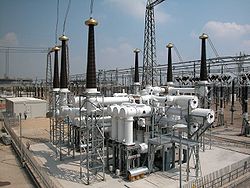Engineering Functions
The SESTLC software package is a transmission and distribution line analyzer for rapid line parameter (constants), EMF and steady-state or fault induced voltage estimates (whether inductive and conductive). It can be used to quickly estimate line parameters, electric fields, and magnetic fields associated with arbitrary configurations of parallel transmission and distribution lines. It also estimates voltages and currents generated by electromagnetic interference on other neighboring metallic utilities, such as pipelines, railways and communications lines. The software has been designed with simplicity in mind, providing much useful information with minimal data entry, when applied to simple system configurations. This can be very helpful for preliminary analyses of more complex systems. The exposed line in SESTLC is not restricted to be parallel to the transmission line; however, a simpler data entry mode is available for cases where the exposed line is always parallel to the transmission line.
Keep in mind that for more complex systems or more detailed studies, the Right-of-Way software package or the MultiFields (HIFREQ computation module) are recommended.
The technical differences of various SESTLC software packages are summarized as follows:
SESTLC (Line Parameters & Induction Option)
- Line parameters of overhead transmission lines
- Electric & Magnetic fields at given observation profiles
- Normal load (steady-state) and fault condition inductive interference on a parallel exposed line
SESTLC+ (Line Parameters, Induction & Conduction Option)
- Line parameters of overhead transmission lines
- Electric & Magnetic fields at given observation profiles
- Normal load (steady-state) condition inductive interference on a parallel exposed line
- Fault condition inductive and conductive interference on a parallel exposed line
SESTLC Pro (Line Parameters, Induction & Conduction With Jagged Exposed Line Option)
- Line parameters of overhead transmission lines
- Electric & Magnetic fields at given observation profiles
- Normal load (steady-state) condition inductive interference on a jagged exposed line
- Fault condition inductive and conductive interference on a jagged exposed line
User Interface
The following figure shows a few typical screens that are accessible when SESTLC is loaded.

SESTLC computes the line parameters of the transmission lines, the electric and magnetic field at selected observation points, the induced stress voltages on the exposed line during steady state conditions and fault conditions on the transmission lines.
The exposed circuit can be described in one of two ways: as a simple “parallel” line (all versions of SESTLC) or by a “jagged” linear path, i.e. a conductor that follows an arbitrary 3D linear path (SESTLC Pro only).
In parallel line mode, the exposed circuit includes a central portion running parallel to the transmission line, continuation portions running perpendicular to the transmission line on both sides of the central portion and termination shunt impedances at both ends. Note that with this setup the continuation portions are not subject to EMF from the transmission line. The longitudinal direction of the transmission line is along the X axis. The coordinates of the exposed line are defined with respect to this coordinate system.
In jagged line mode, the path followed by the conductors consists of any number of sections. Each section can have its own geometrical and electrical characteristics. The configuration is determined by the coordinates of the path. A jagged exposed line starts from the left side and extends to the right side. See the following screen for more details.

Graphical Results
SESTLC displays computation results in a variety of plots using the Array Visualizer tool. The plots can be displayed on your screen immediately after the end of the computations or can be saved on your hard-drives to be displayed later. Below are a 3D plot of the electric field produced by a transmission line near a tower and the induced potential rise on a pipeline that is parallel to a transmission line (2D Plot).







